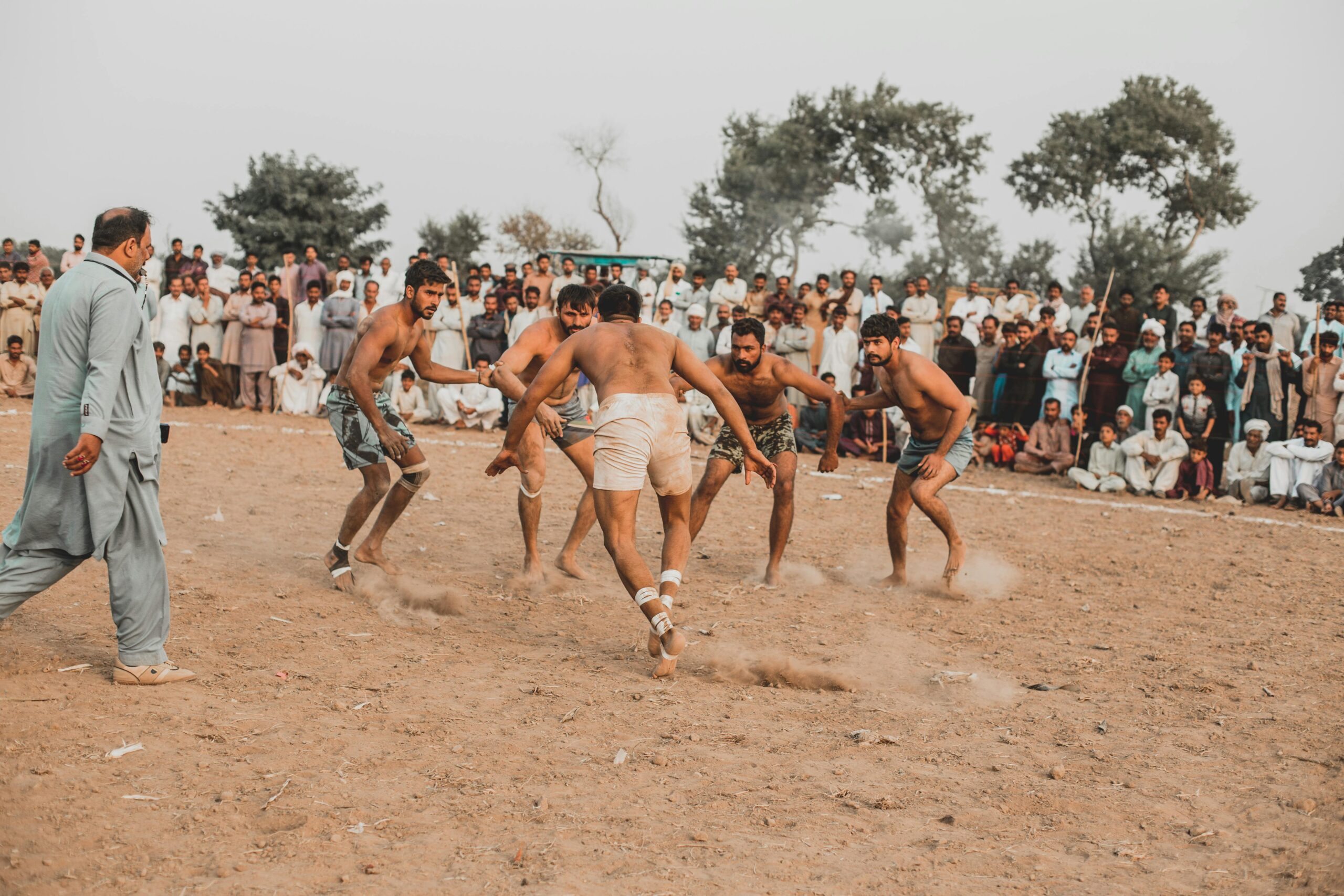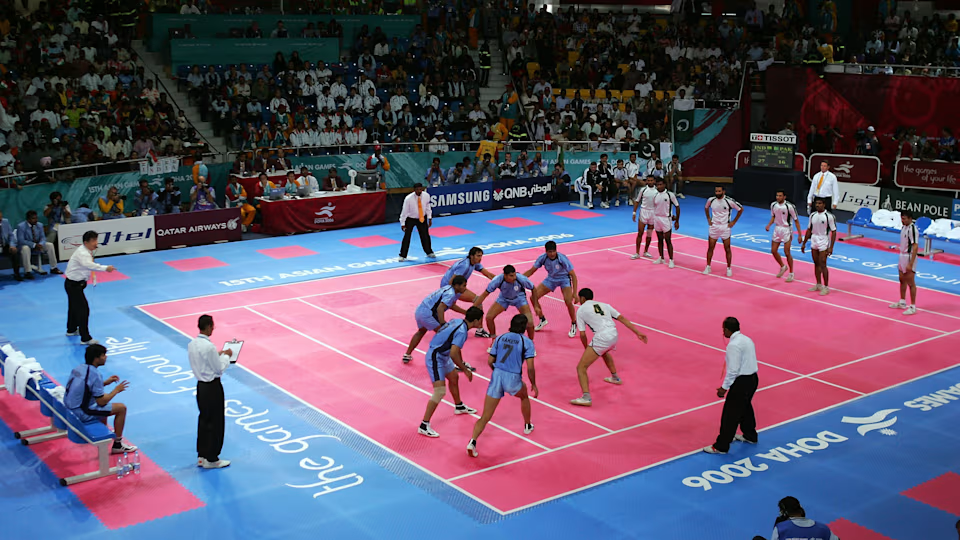History of Kabaddi
From ancient origins to the global stage
discover how kabaddi evolved over millennia.

Ancient Roots
(1500 BC – 500 BC)
Kabaddi’s earliest form, called “Sadugudu,” is described in Sangam literature as a test of strength and stealth among Tamil warriors . Legends claim even Lord Krishna and Gautama Buddha enjoyed proto-kabaddi games .
Formalization & Growth
(1923 AD – Present)
In 1923, Maharashtra sports bodies published the first rulebook, standardizing court size (13×10 m) and scoring . The All-India Federation (1950) and AKFI (1972) propelled kabaddi onto national stages, culminating in Asian Games inclusion (1990) and global leagues like Pro Kabaddi League (since 2014) .

References in Sangam-era Tamil literature to “Sadugudu,” an endurance contest akin to kabaddi .
1500 BC – 500 BC
First formal rules codified in Maharashtra for the All-India Kabaddi Tournament .
1923
All-India Kabaddi Federation formed; organized national championships from 1952 onward .
1950
Amateur Kabaddi Federation of India (AKFI) established under IOA to popularize the sport .
1972
Inaugural Asian Kabaddi Championship; India crowned champions .
1980
Kabaddi debuts as a medal sport at the Asian Games in Beijing; India defends gold .
1990
First Kabaddi World Cup in Mumbai; India beats Iran in the final .
2004
Second Kabaddi World Cup held in West Midlands, UK—first outside Asia .
2025
Did You Know?
Cant
Raiders must chant “kabaddi…kabaddi…” on a single breath to validate their raid .
All-Out (Lona)
If all seven defenders are put out, the raiding team earns 2 bonus points (Lona) and all defenders revive.
Match Mats
Major tournaments use interlocking puzzle mats and plasma scoreboards for replays and scoring.
